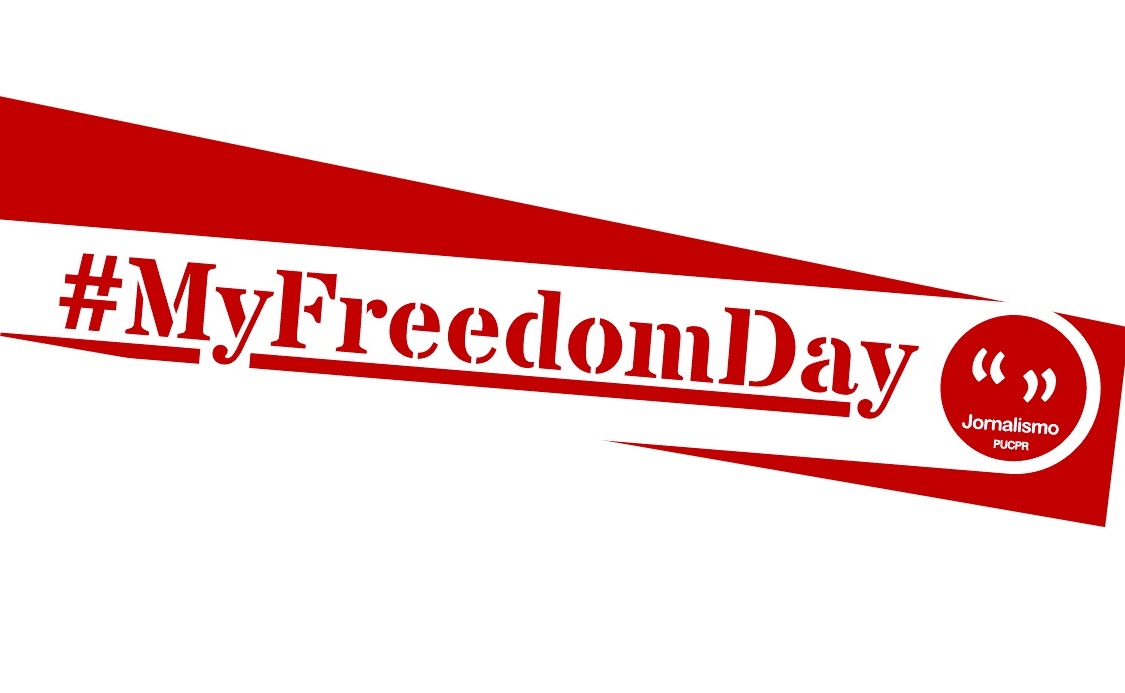Is there slavery in Brazil? Here are 20 facts that will impact you

“No one shall be held in slavery or servitude; slavery and the slave trade shall be prohibited in all their forms.”
Equipe #MyFreedomDay
This sentence is from Article 5 of the Universal Declaration of Human Rights, proclaimed by the United Nations General Assembly on december 10th, 1948. Although it’’ illegal in every country, 45 million people live under a regime of slavery. 5,5 million of them being kids, according to the International Labour Organization.
Since information is key to awareness, PUCPR’s journalism program has joined the #MyFreedomDay campaign, promoted by the CNN network, in partnership with the Essam & Dalal Obaid Foundation (Edof), that is involved in humanitarian issues. In order to make modern slavery clear and reaffirm that freedom is a basic right, students have dived in in data, usually unknown by the general public. The result is disturbing:
1- In 2016, the UN recommended that Brazil reactivated the “Dirty List”, suspended in 2014. The document brings names of companies that are known to explore slavery.
2- Brazil is the 51st country with more slaves in the world, having over 160 thousand people enslaved, according to The Global Slavery Index.
3- Brazil was also the first country to be condemned by the Inter-American Court of Human Rights, for not preventing modern slavery: 128 workers from Green Brazil Fram, in Pará (the case that motivated the conviction), will be indemnified.
4- It was only in 1995 that Brazil recognised slavery in national territory. Shortly after being prosecuted by the Organization of American States.
5- In 2003, the National Eradication of Slavery Plan was launched. To maintain it, the National Eradication of Slavery Commission (Conatrae) was created, in partnership with institutions of the civil society involved with the combat of slavery in the country.
6- According to data from the Secretariat of Women’s Policies, the number of reported cases of human trafficking in Brazil has increased 1500% from 2012 to 2013.
7- In 2015, 257 locations were inspected for modern salvery, and it was found in 90 of them, according to information from the Ministry of Labour.
8- Out of the 1010 workers rescued, 65 of them were immigrants from several nationalities, such as bolivians, chinese, peruvians and haitians.
9- Still based on data from the Ministry of Labour, the number of inspection operations has been decreasing: 189 in 2013; 175 in 2014 and only 143 in 2015. And, in 2015, six of the 26 states had no operation on their territory.
10- Recent data, from 2015, show that in that year, the National Ombudsman for Human Rights received 307 reports of slavery in Brazil.
11- Out of the 936 workers rescued from slavery in 2015, 376 aren’t alphabetized, or went to school only until the fifth grade.
12-In 1850, the slave was worth something around R$ 120 thousand, based on the Ministry of Labour. Today, the workers believe the promise of a real job and in most cases, the boss only pays for the transport.
13- Known as “the second Golden Rule (the law that abolished slavery in Brazil, in 1888); the PEC 438/01 – approved in 2014 – was one of the first severe measures adopted by the Government against slavery. The current amendment (81/2014) affirms the expropriation of lands that hosted slavery.
14- The clothing brand M. Officer was sentenced to pay R$ 6 million, in 2016, for using slavery in the manufacturing of their product. This was the first confirmed case since the promulgation of the Law 14.946/2013 (Bezerra Law), that punishes companies from Sao Paulo with the cassation of the Tax on the Circulation of Goods and Services (ICMS).
15- Between 2010 and 2015, 437 workers in similar conditions to slavery were freed in the state of Paraná. Half of them were workers from sugarcane mills.
16- In 2015, the Ministry of Labour found people in state of Santa Catarina, working over 14 hours in a row for JBS – one of the biggest chicken exporters in Brazil – owner of brands such as Friboi, Seara and others.
17- The long-term reintegration of slavery victims is defined on financial supporting programs, housing programs, professional qualification, social assistance or education programs. In 2015 only the state of Mato Grosso provided funds to these initiatives.
18- Child labour affects kids mainly between the ages of 10 to 15 years. According to the report made by Unicef in 2015, most of these kids are black boys.
19- The Eradication of Slavery Week happens in brazilian capitals in memory of the Slaughter of Unaí, when four tax auditors were murdered investigating slavery in Unaí, city of Minas Gerais, in 2012.
20- This year, from may 24th to 27th, in Porto Alegre, the 8th Encounter Slavery & Freedom in Southern Brazil will take place. The event brings together researchers that dedicate themselves to the themes of slavery, freedom and Post-emancipation in the southern region of the country.
Team:
Adriana Barquilha
Beatriz Mira
Bruno Previdi St’Ana
Flavia Ester Mota
Gabriel Dittert
Gabrielle Comandulli
Gilmar Montargil
Giordana Chemin
Heloíse Marques Falleiros de Pádua
Isabel Bruder Woitowicz
Isabelle Almeida
Mahayla Haddad
Mariana Balan
Nathália Simões Manfron Barros
Patricia Helena de Ribeiro Munhoz Costa
Paula de Araujo e Silva
Taís Arruda
Thais Porsch
Vinicius Paiva Scott
Orientation:
Professors: Criselli Montipó, Julius Nunes e Miguel Manassés.
Translation: Beatriz Mira
